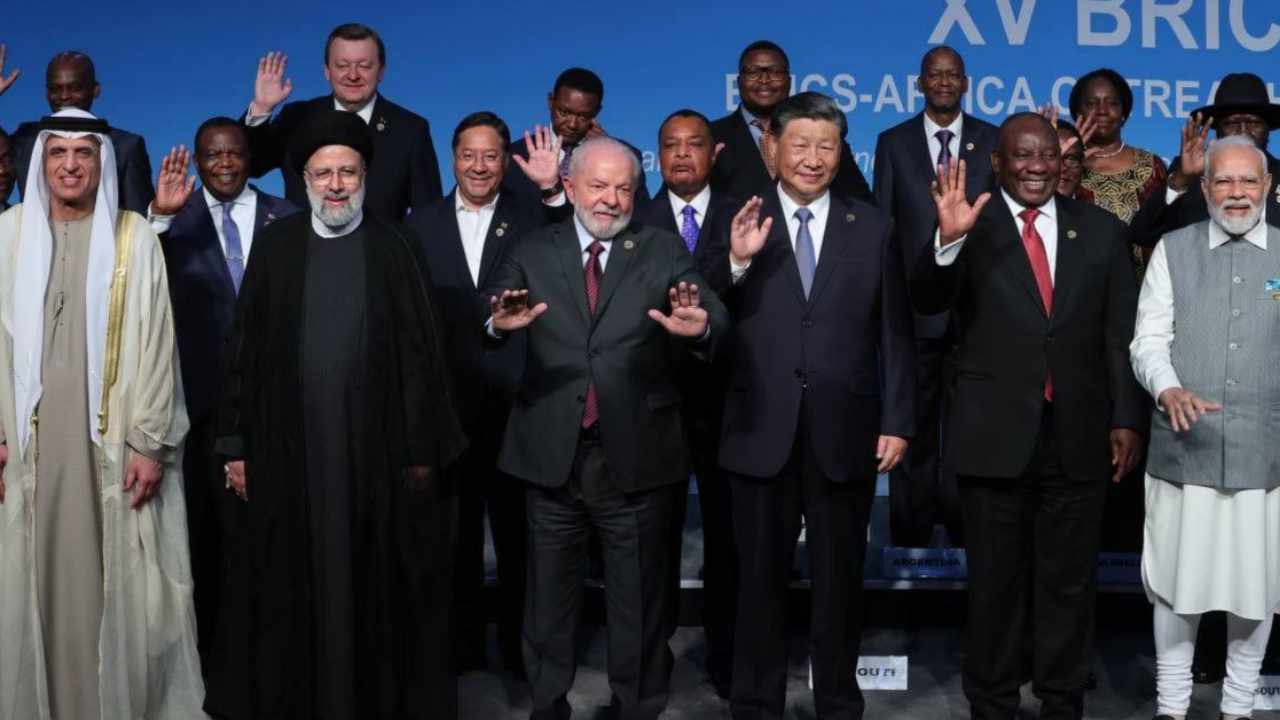
O Papel do BRICS Plus no Desenvolvimento de Corredores de Transporte e Seu Impacto no Comércio Global
O BRICS Plus, com seus novos membros Irã, Egito, Emirados Árabes Unidos, Arábia Saudita e Etiópia, emergiu como um ator importante na logística e transporte internacionais. Ao controlar rotas de trânsito cruciais, como o Canal de Suez e o Estreito de Ormuz, e desenvolver corredores internacionais, como o Corredor Norte-Sul, o BRICS Plus está redefinindo os fluxos de comércio global. Este artigo examina o papel do grupo no desenvolvimento de infraestrutura de transporte, seu impacto no comércio global e os desafios que enfrenta.

A Importância dos Corredores de Transporte no Comércio Global
Corredores de transporte, como a Iniciativa Cinturão e Rota da China ou o Corredor Norte-Sul, funcionam como artérias críticas para o comércio global. Essas rotas permitem o movimento eficiente e econômico de mercadorias entre continentes. O BRICS Plus, com membros estrategicamente localizados em regiões geográficas chave, tem um potencial significativo para aprimorar esses corredores. Por exemplo, o controle do Egito sobre o Canal de Suez, o acesso do Irã ao Golfo Pérsico e ao Mar Cáspio, e os portos atlânticos estratégicos do Brasil oferecem vantagens estratégicas para o desenvolvimento logístico global.
O Papel do Irã nos Corredores de Transporte
O Irã, como novo membro do BRICS, desempenha um papel central no desenvolvimento de corredores de transporte. Sua posição geográfica como uma ponte entre a Ásia, a Europa e o Oriente Médio facilita a integração de rotas comerciais Leste-Oeste e Norte-Sul. O Corredor Norte-Sul, que se estende da Índia à Rússia através do Irã, é um projeto emblemático do BRICS Plus. Esse corredor pode reduzir significativamente o tempo e os custos de transporte entre a Índia e a Rússia, impulsionando o comércio entre essas nações.
Além disso, o desenvolvimento de portos como Chabahar pelo Irã proporciona acesso ao Oceano Índico, servindo como uma porta de entrada para mercadorias indianas e chinesas alcançarem os mercados do Oriente Médio e da Europa. A infraestrutura ferroviária em expansão do Irã, parte da rede ferroviária de 382.000 quilômetros do BRICS, aumenta ainda mais a capacidade de transporte do grupo.
Cooperação Logística do BRICS Plus
O BRICS Plus está focado no desenvolvimento de infraestrutura de transporte para aumentar sua competitividade global. Por exemplo, a proposta da Rússia de estabelecer uma bolsa de grãos do BRICS poderia estabilizar preços e impulsionar o comércio de grãos dentro do grupo. Em 2023, os países do BRICS produziram 1,17 bilhão de toneladas de grãos, representando 42% da produção global. Com os novos membros, esse número aumentou para 1,24 bilhão de toneladas.
Além disso, o BRICS Plus está trabalhando para criar uma rede de rotas de transporte independentes de caminhos controlados pelo Ocidente. Isso é particularmente crucial devido às sanções ocidentais que interromperam rotas comerciais tradicionais. Por exemplo, as sanções ao petróleo contra a Rússia e o Irã forçaram esses países a desenvolverem corredores de trânsito alternativos.
Desafios Logísticos
Apesar de seu potencial, o BRICS Plus enfrenta desafios logísticos. Alguns estados membros, como a Etiópia, carecem de infraestrutura portuária suficiente, apesar de sua localização estratégica no Chifre da África. Além disso, tensões políticas e econômicas, particularmente entre China e Índia, podem dificultar a cooperação logística. Pressões externas, como ameaças de tarifas dos EUA em 2025, também podem desincentivar investimentos em projetos de transporte por alguns membros.
Impacto no Comércio Global
O desenvolvimento de corredores de transporte pelo BRICS Plus pode reformular as dinâmicas do comércio global. Ao reduzir a dependência de rotas controladas pelo Ocidente, como o Canal do Panamá ou o Estreito de Malaca, o BRICS Plus pode redirecionar os fluxos de comércio para caminhos alternativos. Isso não apenas impulsiona o comércio intra-grupo, mas também capacita nações em desenvolvimento a desempenharem um papel mais ativo no comércio global.
Além disso, o desenvolvimento de corredores de transporte pode atrair investimentos estrangeiros. Por exemplo, os investimentos chineses no porto de Chabahar, no Irã, e nos projetos do Canal de Suez, no Egito, podem aumentar as capacidades comerciais desses países. Esses investimentos também criam empregos e fortalecem as economias locais.
Conclusão
O BRICS Plus está se posicionando como líder no comércio global por meio de seu foco em corredores de transporte e infraestrutura logística. Os papéis do Irã, Egito e outros novos membros são cruciais nesse processo, mas o sucesso depende de superar desafios internos e externos. Ao continuar nessa trajetória, o BRICS Plus pode emergir como uma alternativa poderosa ao sistema comercial dominado pelo Ocidente.
Fonte: Eghtesad Moaser – Fortalecendo os Interesses e Direitos das Economias em Desenvolvimento
